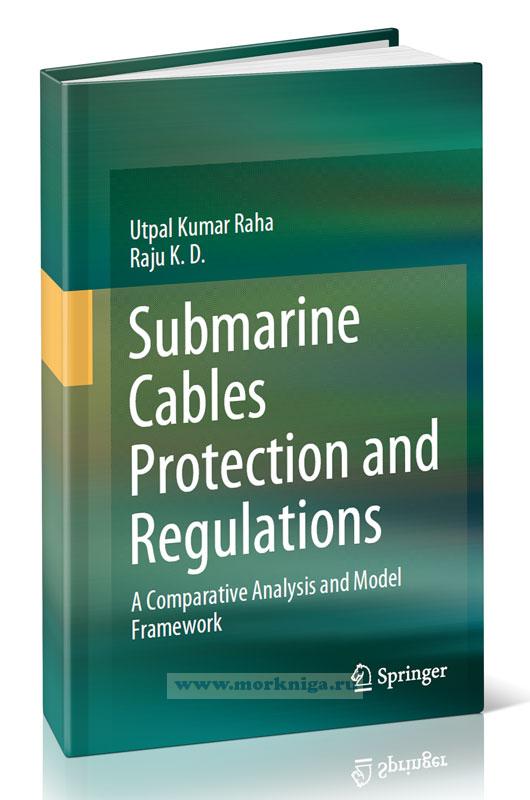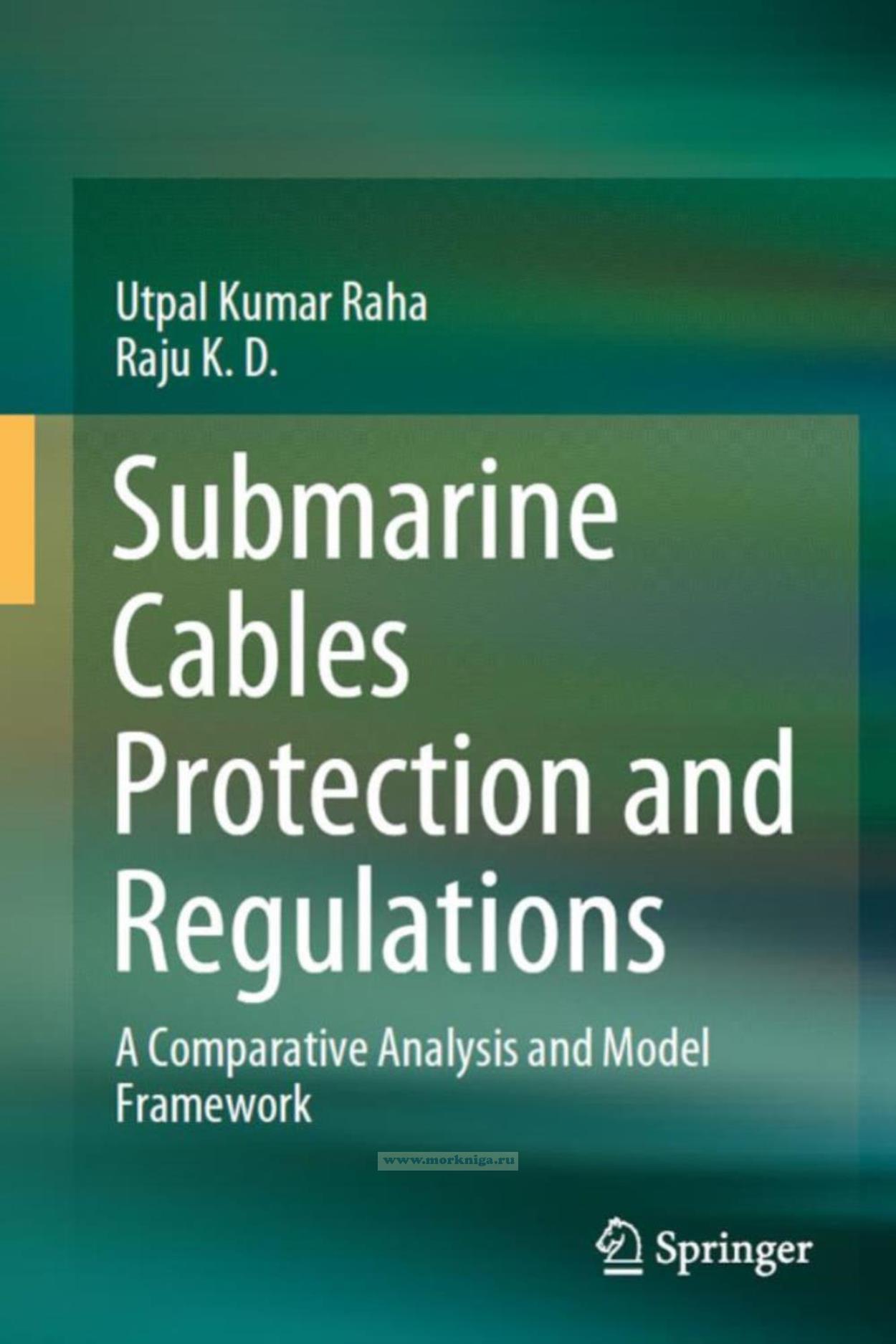Сб с 10 до 16
Submarine Cables Protection and Regulations. A Comparative Analysis and Model Framework/Регулирование и защита подводных кабелей. Сравнительный анализ и структура
Издание на английском языке
This book acknowledges that laying, quick relinking, and protecting submarine cables have become critical with timely approval for carriers and cable repairing ships and are most challenging in many jurisdictions. It identifies that a dedicated national instrument on submarine cable as a way forward is yet to be appreciated by many of the States, and presently, there is no model legal framework for national instruments on submarine cables available. To bridge these gaps, the book undertakes a systematic inquiry and analysis of the relevant authorities of submarine cable regimes.
Contents
1 Introduction
1.1 Background
1.2 Submarine Cables
1.3 Law on Submarine Cables
1.4 Primary Problem with the Submarine Cable System
1.5 Literature Review Revealing the Protection and Regulation Challenges of the Submarine Cable System
1.6 Objectives of the Study
1.7 Research Methodology
1.8 The Scope of the Study
1.9 Chapterization
References
2 Submarine Cables: Key Principles and International Law of the Sea
2.1 Background
2.2 Growth, Importance, and Challenges to the Submarine Cable Infrastructure
2.3 Laying and Protection of Submarine Cable-Requirement of Regulation onMarine Affairs
2.4 Fundamental Principles and International Instruments on Submarine Cables
2.5 Convention for the Protection of Telegraph Cables 1884 (the Cable Convention 1884)
2.6 The League of Nations Conference for the Codification of International Law 1930 at the Hague (Hague Conference)
2.7 UNCLOS I-1958
2.8 UNCLOS II-1960
2.9 UNCLOS III 1982-The Laying and Protection of Submarine Cables
2.10 International Institutional Framework Dealing with the Submarine Cables
2.11 Draft Convention for the Protection and Repair of Submarine Cable Infrastructure
2.12 Ambiguities in the International Regime on Submarine Cables and theWay Forward
2.13 Summary
References
3 Challenges to the Laying and Protection of Submarine Cable in Selected Jurisdictions-A Legal and Comparative Analysis
3.1 Introduction
3.2 The Basis for Identification of the Selected Jurisdictions
3.3 Legal Analysis of the Law on Submarine Cables in Selected Jurisdictions-An Overview
3.3.1 Asia
3.3.2 European Union
3.3.3 North America
3.3.4 South America
3.3.5 Africa
3.4 Comparative and Legal Analysis on Legal Instruments and Other Arrangements Across the Selected Jurisdictions and Comparative Chart on Instruments on Submarine Cables in the Selected Jurisdictions
3.5 Final Report-Protection of Submarine Cables Through Spatial Separation
3.6 Reliability of Global Undersea Communications Cable Infrastructure (ROGUCCI)
3.7 Summary
References
4 An Integrated Approach toward Submarine Cables in Australia and New Zealand-A Way Forward
4.1 Introduction
4.2 Australia and New Zealand-Dedicated Legal Regimes on Submarine Cable
4.3 Australia
4.3.1 Background of Schedule 3A
4.3.2 Definition and Scope of the Schedule
4.3.3 Schedule 3A and the ACMA Act on Protection Zone Related to Submarine Cables
4.3.4 Schedule 3A and the ACMA Act on Protection Zone Related Prohibited and Restricted Activities
4.3.5 Schedule 3A and the ACMA Act on Submarine Cables Installation Permits
4.3.6 Offenses and Penalties Under Schedule 3A and ACMA Act
4.3.7 Claims, Indemnity, and Compensation
4.3.8 Liability and Enforcement
4.4 New Zealand
4.4.1 Scope of the 1996 Act of New Zealand
4.4.2 Protected Area for Submarine Cables
4.4.3 Protection and Enforcement Officer and Seizure and Forfeiture of Property and Enforcement
4.4.4 Compensation and Indemnity and Liability and Offense
4.5 Comparative Analysis Between Submarine Cable Regimes of Australia and New Zealand
4.6 Summary
References
5 Conclusion and Suggestions
5.1 Suggestions
5.2 Draft Model Law on National Instrument on Submarine Cable
5.2.1 Executive Summary
5.2.2 Purpose of the Model Law
5.2.3 Guiding Principles of the Model Law
5.2.4 Structure of the Model Law
5.3 Proposed Draft Model Framework
5.3.1 Proposed Measures and Procedural Guidance for the Implementation of National Instrument on Submarine Cable
References
Bibliography

